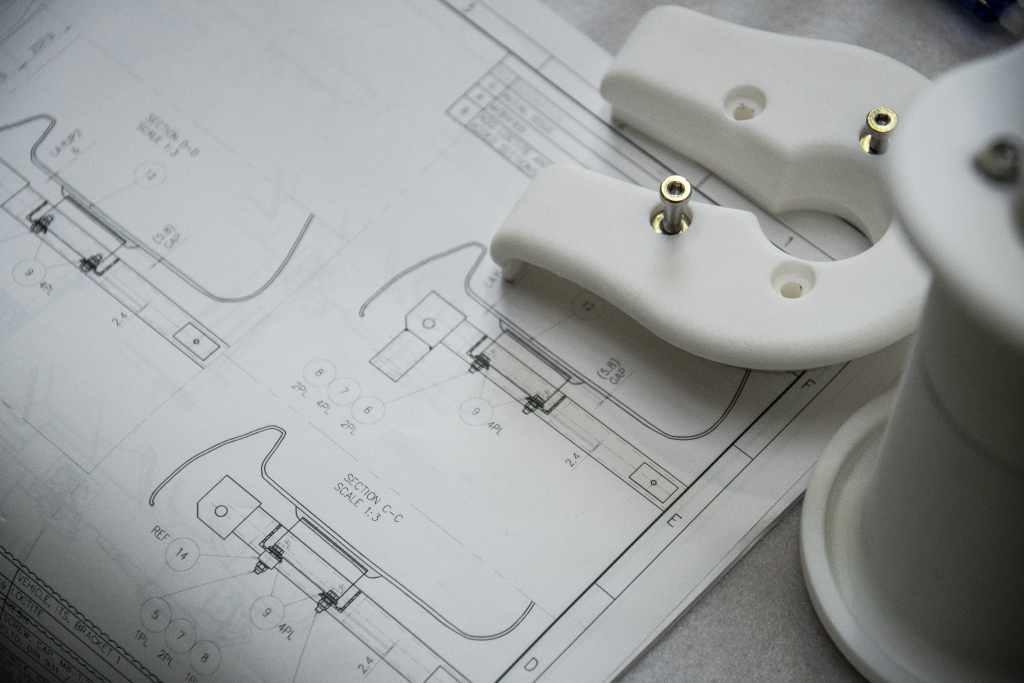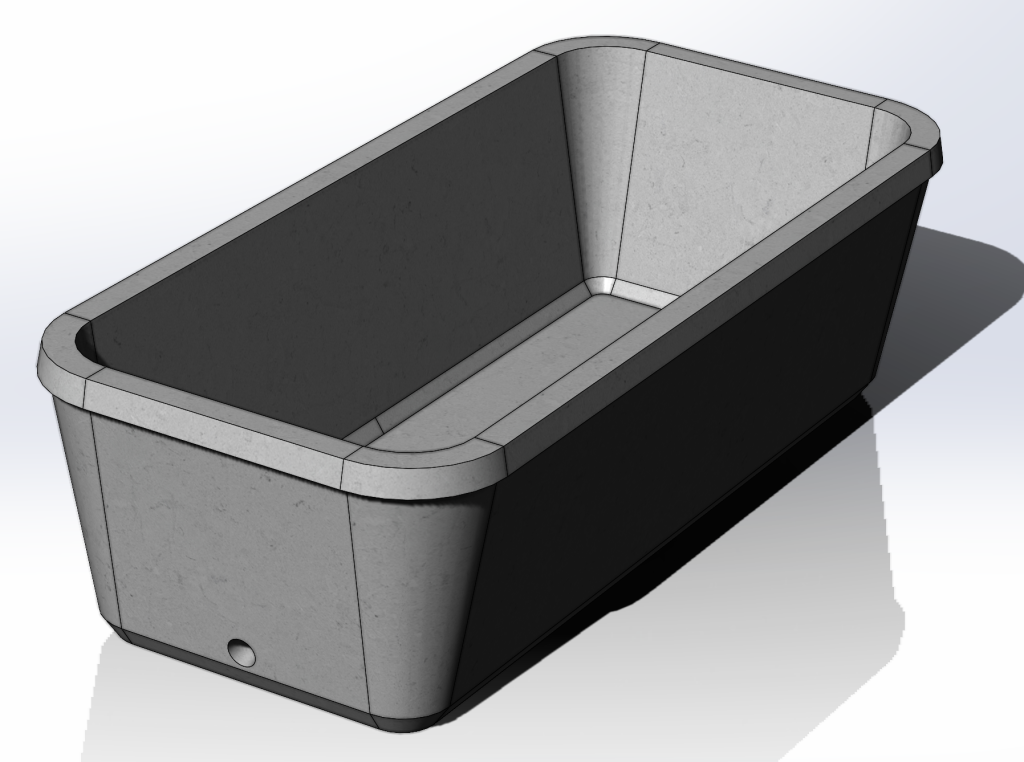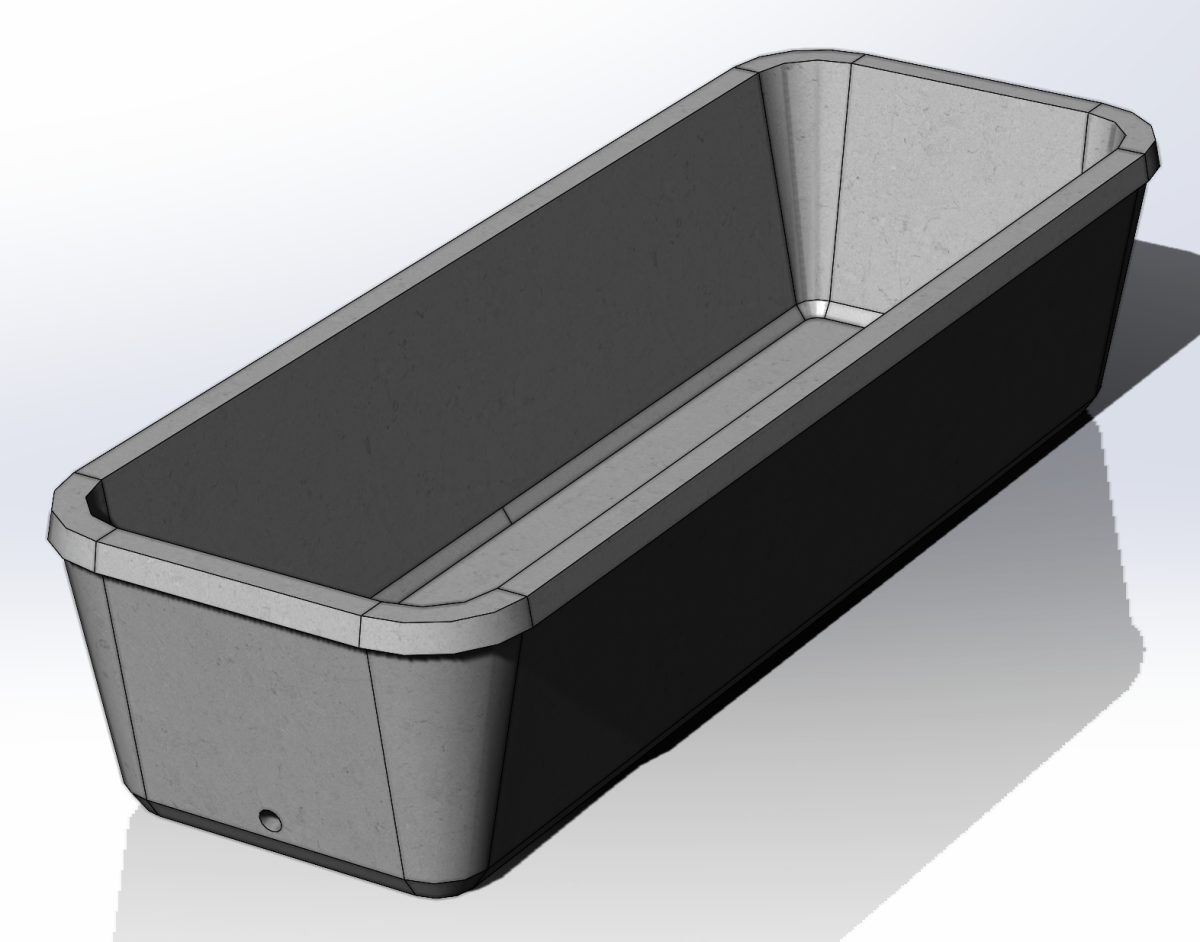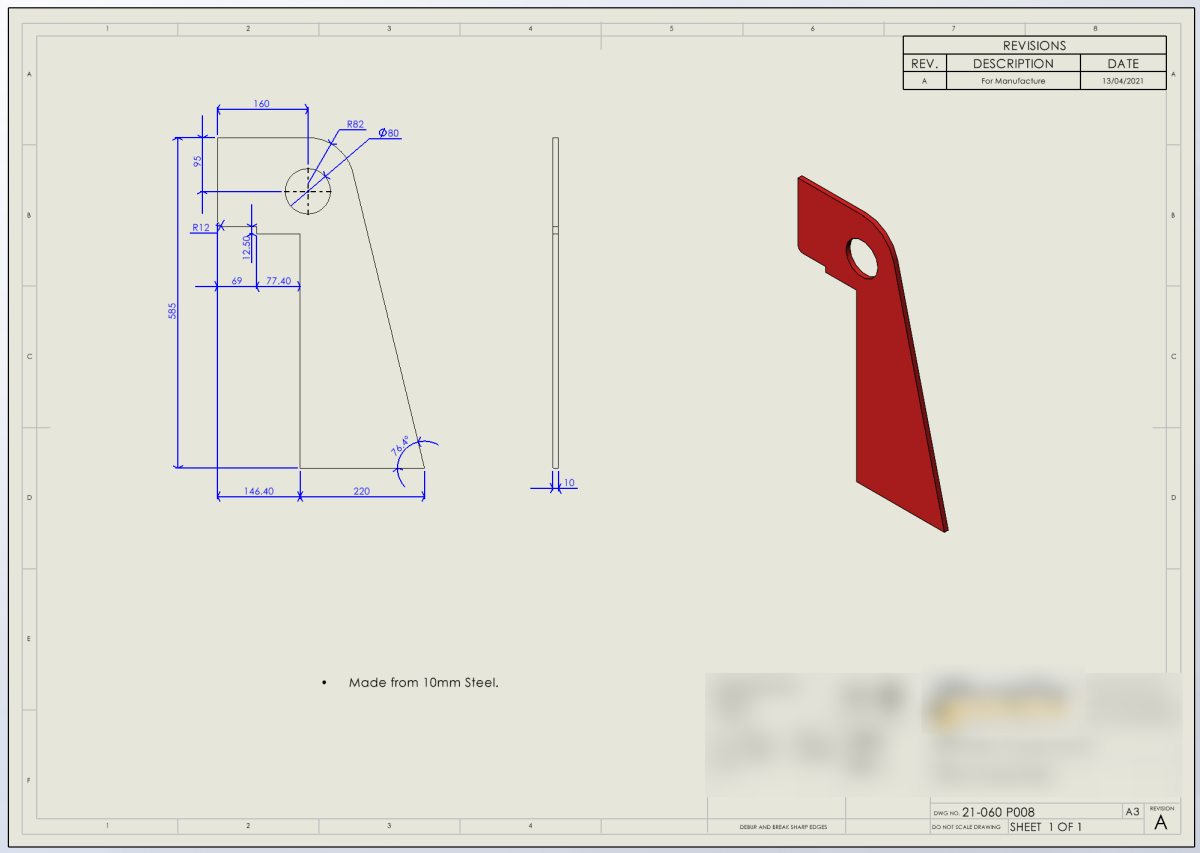Design for Manufacturing
Design for Manufacturing (DFM) is a critical phase in the product development process that can significantly improve the efficiency and cost-effectiveness of your production. At Cullen 3D Design, we specialise in providing comprehensive DFM services to our clients, optimising your product designs for simpler, more efficient manufacturing. We ensure that your designs are not just innovative and functional but are also perfectly tailored for seamless production. By considering factors such as material selection, production processes, assembly methods, and compliance with industry standards, we can help you reduce manufacturing costs, minimise wastage, and shorten time to market. Partner with us and let’s make your manufacturing journey a rewarding and profitable one, right from the design stage.
Case Study
Design Brief
- Design two precast concrete drinking troughs for livestock that would hold 1360 litres and 1820 Litres respectively of water when full.
- Design moulds for casting the concrete drinking troughs
The final design of the drinking troughs had to have the following characteristics
- Be attractive to look at with rounded corners
- Incorporate a drain plug in one end of the trough
- Have a strong rim that allowed for placement of reinforcement steel
- Be easy to manufacture using a 2 piece split mould design
- Have a maximum height of 800mm
- Have a maximum width of 1240mm
- Be able to fit an existing concrete cover that was being used on existing drinking troughs
The final design of the moulds had to have the following characteristics.
- To fit the existing production equipment.
- To split in 2 pieces
- The joint in the moulds had to be fully sealed and have no leaks when filled with wet concrete
- Incorporate existing fastening hardware that is used in the manufacturing plant.
- Be designed so as the mould can be disassembled, emptied, cleaned and reassembled in the most efficient manner possible.
- Employee safety is of utmost importance, so placement of fastening hardware is critical so as to give easy access to the fasteners without employees having to stretch or strain to reach them.
- The moulds had to be strong enough to withstand the rigours of daily production in a concrete plant.
- The design life of a mould should be 20 years.
- Produce a full set of parts and assembly drawings for the moulds
Part 1 – Concrete Product Design
Using the design brief we started working on the designs, the design process was to produce 3D models of the troughs, then produce general detail drawings showing the dimensions of the trough, water volume, estimated finished weight of the trough and other critical details. We then send the designs and drawings to our customer for feedback. Once our customer had reviewed the designs we then made any modifications to the design that our customer requested until we had the final design for both drinking troughs.
Part 2 – Mould Design
We then had to design the moulds for the manufacture of the concrete drinking troughs. We started by effectively designing steel sheets that wrapped around our trough designs so as to form a cavity that when filled with concrete would form the trough. We then added a steel support frame. This steel support frame had two purposes, the first purpose was to support and hold in place the steel sheets that form the cavity for the concrete will be poured into, the second purpose was to form a frame that could fit into the existing production equipment that our customer had on site. We then added steel flanges at the joints in the moulds, these steel flanges had to incorporate a watertight seal that would stop the moulds from leaking. These steel flanges would also incorporate the fastening hardware to hold the two piece mould together during casting.






